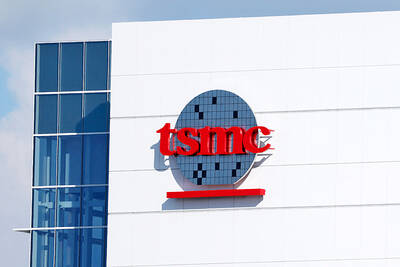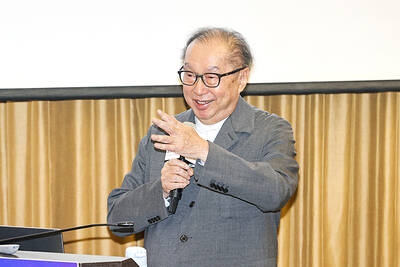Apple Inc’s major iPhone assemblers are among the companies expected to win approval to participate in a US$6.6 billion stimulus program to bring manufacturing to India, people familiar with the matter said, a potentially seismic shift as the world’s most valuable company diversifies beyond China.
The Indian government at a Cabinet meeting tomorrow is expected to approve a plan aimed at bringing US$150 billion in mobile-phone production to the nation over the next five years, said the people, who asked not to be identified because the matter is private.
Among the dozen phone makers already cleared by a high-powered government committee are Apple’s primary supplier, Hon Hai Precision Industry Co (鴻海精密), known internationally as Foxconn Technology Group (富士康科技集團), which had submitted two applications, as well as its Taiwanese peers Wistron Corp (緯創) and Pegatron Corp (和碩), the people said.
The three firms make virtually every iPhone sold globally in sprawling factories mainly in China.
Under the Production Linked Incentive (PLI) program, manufacturing incentives are to rise each year in an ongoing effort to entice the world’s biggest smartphone brands to make their products in India and export to the world.
Besides the Apple contractors, Samsung Electronics Co is the only other applicant for the five slots allotted to foreign companies.
China’s largest phone makers Huawei Technologies Co (華為) and BBK Group (步步高集團), which manufactures brands such as Oppo (歐珀) and Vivo (維沃), are conspicuous by their absence.
Amid rising trade and political tensions between the US and China, India is betting that many global brands would be keen to reduce their dependence on China.
If successful, the program could set in motion a shift in electronics manufacturing in the next five years.
“It’s a thoughtful move by the government aimed at wooing Apple to bring significant iPhone manufacturing to India because, when the iPhone maker shifts, an entire ecosystem follows,” said Hari Om Rai, chairman and founder of Lava International Ltd, India’s largest phone maker. “The next five years will be dramatic, and India could become the new China in phone manufacturing.”
Lava, based in the New Delhi suburbs, is among the Indian phone makers applying for manufacturing incentives, along with Karbonn Mobiles India Pvt Ltd and Dixon Technologies India Ltd.
To receive the incentives, foreign manufacturers, including Foxconn, Wistron and Samsung, must commit to specific investment and production targets of devices that sell for at least 15,000 rupees (US$204); Indian phone makers would have no such restrictions.
Indian Minister of Electronics and Information Technology Ravi Shankar Prasad last month told reporters that Apple accounts for 37 percent and Samsung 22 percent of global sales revenue from mobile phones.
The incentive scheme would “increase their manufacturing base manifold in the country,” the ministry said in a statement.
Apple did not respond to requests for comment.
Pegatron, the second-largest iPhone assembler after Foxconn with a number of factories in China, in July announced that it would set up a plant in India.
Apple accounts for more than half of Pegatron’s business. If approved, Pegatron’s first Indian factory would be eligible for PLI, the people said.
In the next five years, India could attract an additional 10 percent of global handset production, Credit Suisse Group AG said in a note.
Although the nation is the world’s second-largest handset market, with plenty of room for domestic sales growth, the government’s clear aim is to eventually become a global manufacturing colossus to rival China.
Almost two-thirds of the stimulus program is targeted at the export market, the people said.
Pankaj Mohindroo, chairman of the India Cellular and Electronics Association, a trade group that represents leading phone makers including Apple, Oppo and Xiaomi Corp (小米), said that incoming handset makers would be accompanied by a host of smaller sub-assemblers and component makers, expanding the sector to seven times its current size in the next five or more years.
“India’s incentive scheme will be a game-changer that will make the country No. 1 in mobile manufacturing, or at least a close No. 2, by 2025,” Mohindroo said.

SEASONAL WEAKNESS: The combined revenue of the top 10 foundries fell 5.4%, but rush orders and China’s subsidies partially offset slowing demand Taiwan Semiconductor Manufacturing Co (TSMC, 台積電) further solidified its dominance in the global wafer foundry business in the first quarter of this year, remaining far ahead of its closest rival, Samsung Electronics Co, TrendForce Corp (集邦科技) said yesterday. TSMC posted US$25.52 billion in sales in the January-to-March period, down 5 percent from the previous quarter, but its market share rose from 67.1 percent the previous quarter to 67.6 percent, TrendForce said in a report. While smartphone-related wafer shipments declined in the first quarter due to seasonal factors, solid demand for artificial intelligence (AI) and high-performance computing (HPC) devices and urgent TV-related orders

BYPASSING CHINA TARIFFS: In the first five months of this year, Foxconn sent US$4.4bn of iPhones to the US from India, compared with US$3.7bn in the whole of last year Nearly all the iPhones exported by Foxconn Technology Group (富士康科技集團) from India went to the US between March and last month, customs data showed, far above last year’s average of 50 percent and a clear sign of Apple Inc’s efforts to bypass high US tariffs imposed on China. The numbers, being reported by Reuters for the first time, show that Apple has realigned its India exports to almost exclusively serve the US market, when previously the devices were more widely distributed to nations including the Netherlands and the Czech Republic. During March to last month, Foxconn, known as Hon Hai Precision Industry

Taiwan Semiconductor Manufacturing Co (TSMC, 台積電) and the University of Tokyo (UTokyo) yesterday announced the launch of the TSMC-UTokyo Lab to promote advanced semiconductor research, education and talent development. The lab is TSMC’s first laboratory collaboration with a university outside Taiwan, the company said in a statement. The lab would leverage “the extensive knowledge, experience, and creativity” of both institutions, the company said. It is located in the Asano Section of UTokyo’s Hongo, Tokyo, campus and would be managed by UTokyo faculty, guided by directors from UTokyo and TSMC, the company said. TSMC began working with UTokyo in 2019, resulting in 21 research projects,

Quanta Computer Inc (廣達) chairman Barry Lam (林百里) yesterday expressed a downbeat view about the prospects of humanoid robots, given high manufacturing costs and a lack of target customers. Despite rising demand and high expectations for humanoid robots, high research-and-development costs and uncertain profitability remain major concerns, Lam told reporters following the company’s annual shareholders’ meeting in Taoyuan. “Since it seems a bit unworthy to use such high-cost robots to do household chores, I believe robots designed for specific purposes would be more valuable and present a better business opportunity,” Lam said Instead of investing in humanoid robots, Quanta has opted to invest